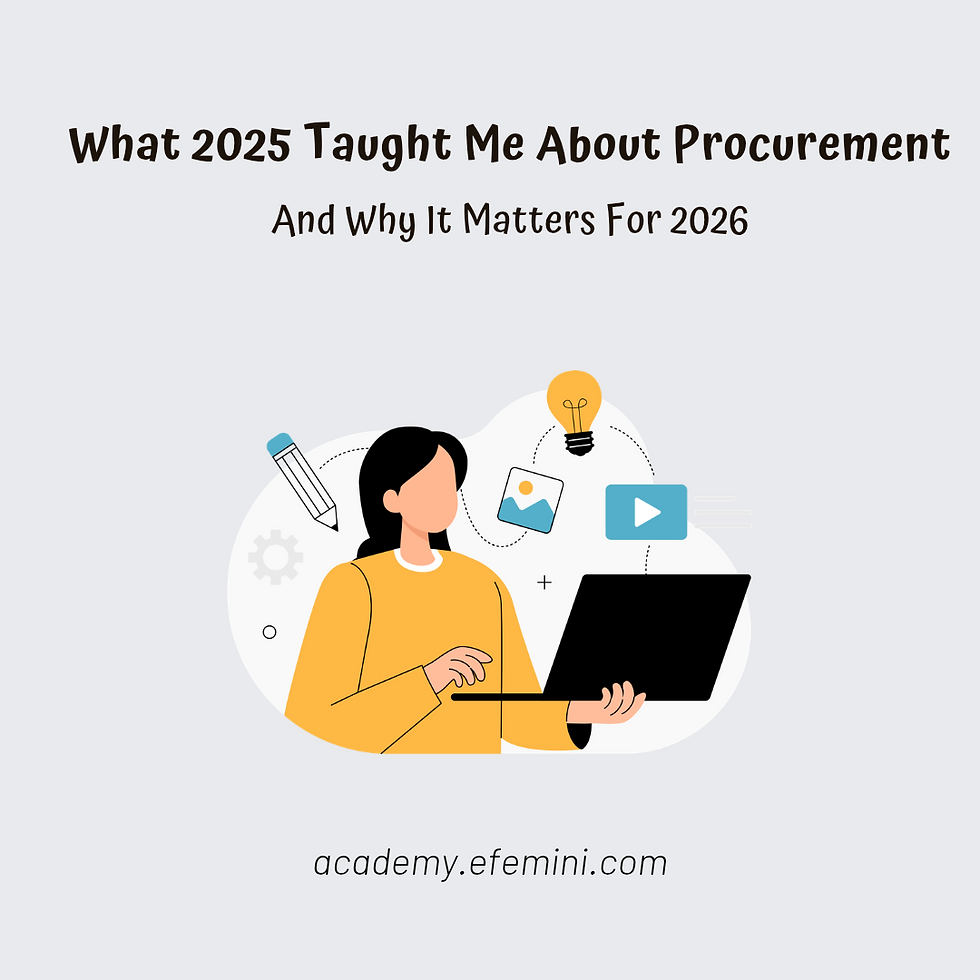Are You Overlooking These 5 Procurement Process Steps in 2025?
- Efemini

- May 17, 2025
- 2 min read
If you've ever wondered why some procurement strategies save money and build strong supplier relationships, while others fall flat, the answer often lies in the process itself.
In 2025, understanding the right procurement process steps isn’t just a nice-to-have; it’s a must-have for anyone involved in sourcing, purchasing or supplier management.
Let’s break it all down in a simple and relatable way.
Whether you’re new to procurement or have been doing it for years, these steps are what keep things flowing smoothly from start to finish.

First, What Does a Procurement Process Flow Even Look Like?
Think of it like a map. A procurement process flowchart shows each step you need to take, so nothing gets missed and everyone’s on the same page. It helps you spot delays, reduce confusion, and improve decision-making. The flow usually starts with identifying what’s needed and ends with paying for it (after making sure everything checks out, of course).
Types of Procurement Process You Might Be Using
Before we dive into the steps, it helps to know that not all procurement is the same. Businesses often work with four main types:
● Direct Procurement: Buying materials used directly in production.
● Indirect Procurement: Office supplies, tech tools, anything that supports daily operations.
● Services Procurement: Bringing in consultants or service providers.
● Sustainable Procurement: Choosing suppliers that align with ethical and eco-friendly values (a big deal in 2025!).

5 Procurement Process Steps You Can’t Afford to Ignore
1. Spot the Need and Make a Plan: This is where everything starts. Ask yourself: What do we need and why? Maybe the company is running low on equipment or a new project requires special tools. Either way, it's important to define the need clearly, set a budget and think ahead.
2. Find the Right Suppliers: Once you know what you need, it’s time to go “supplier hunting.” You want a supplier who’s reliable, reasonably priced, and aligns with your company’s values. In 2025, you’re likely using digital platforms or AI tools to speed this up. But it still boils down to doing your homework and making smart choices.

3. Get the Green Light: You’ve found your ideal supplier, great! Now, get internal approval. This usually means filling out a purchase requisition and waiting for decision-makers to give the go-ahead. It might seem like a formality, but it helps keep budgets in check and ensures value for money spent.
4. Negotiate and Seal the Deal: Here’s where things get real. You’ll negotiate pricing, timelines, and other terms. Once both sides agree, a purchase order is issued to the supplier. This makes everything official and gives you a paper trail to fall back on if anything goes sideways.
5. Receive, Review, and Pay: The goods or services arrive. Now’s the time to inspect everything. Did it meet expectations? Was it delivered on time? Once everything checks out, you process the payment, and maybe even give the supplier feedback to strengthen future collaborations.
Summarily, mastering these procurement process-steps isn’t about making things complicated, it’s about making sure nothing slips through the cracks.
Need procurement specific training? Reach out to support@efemini.com and we'll get you sorted.




Comments